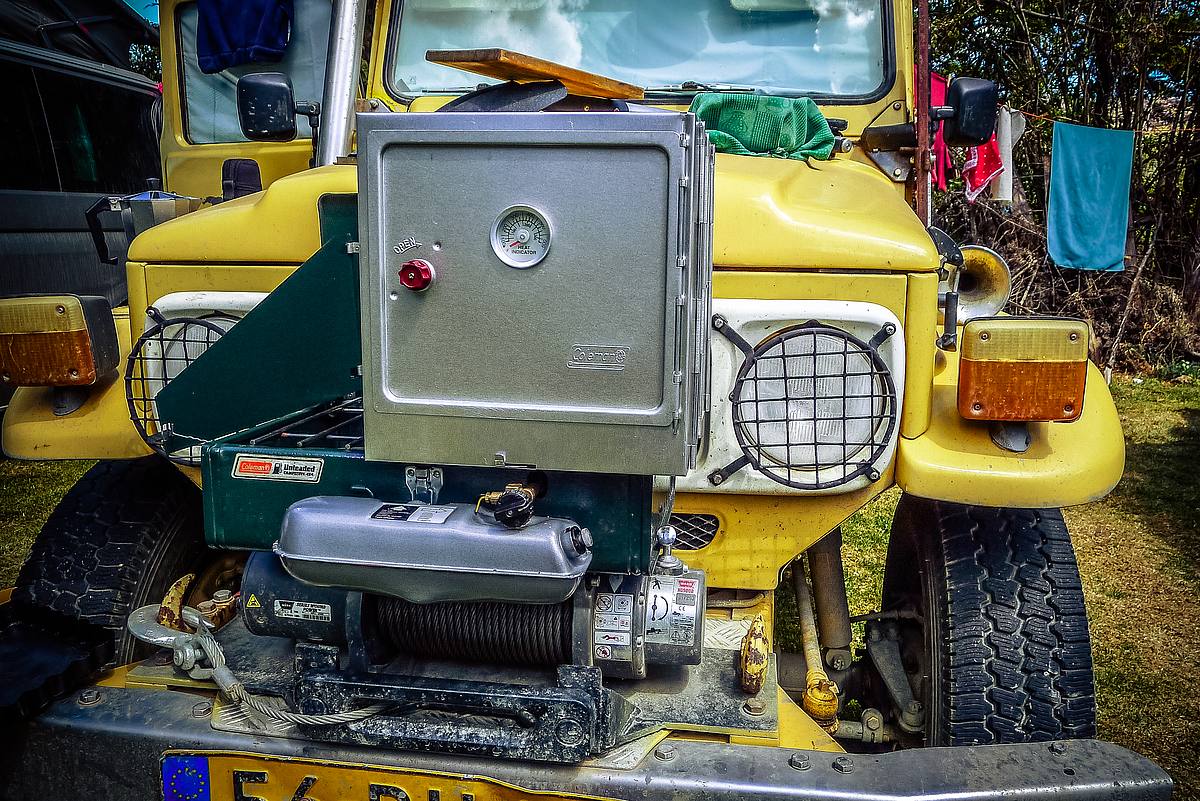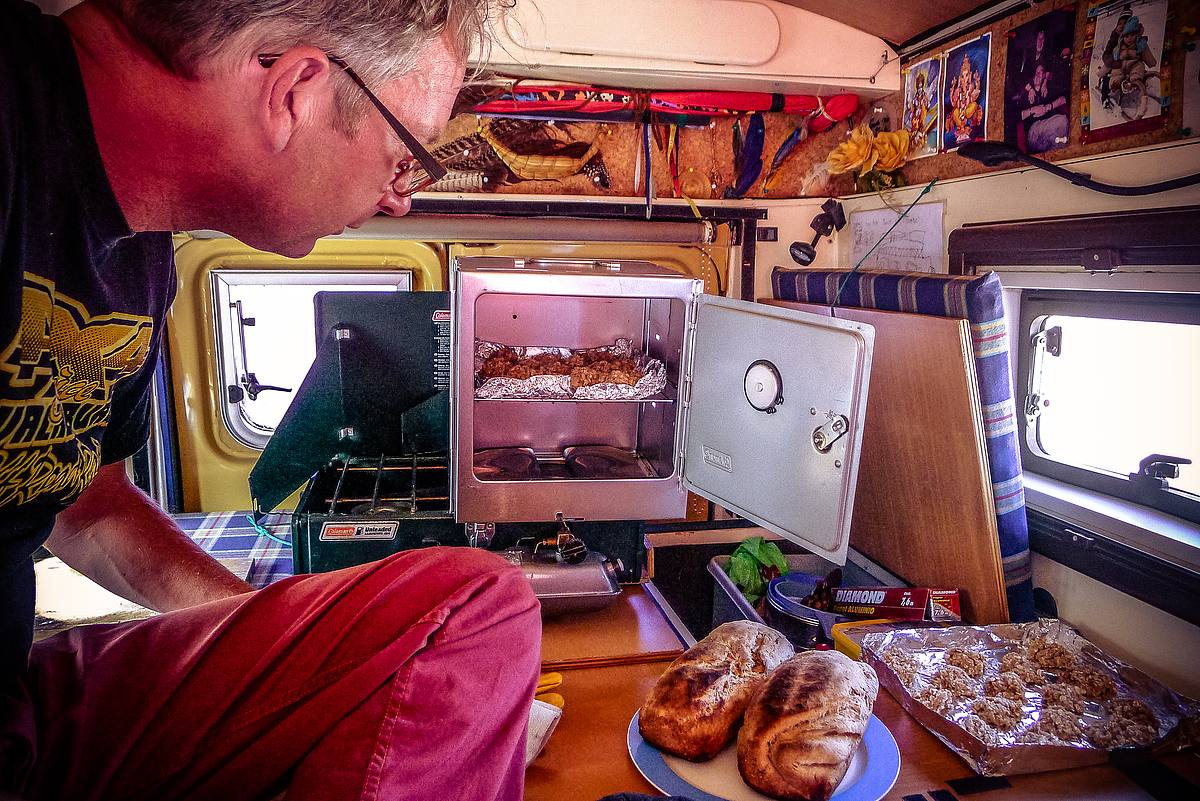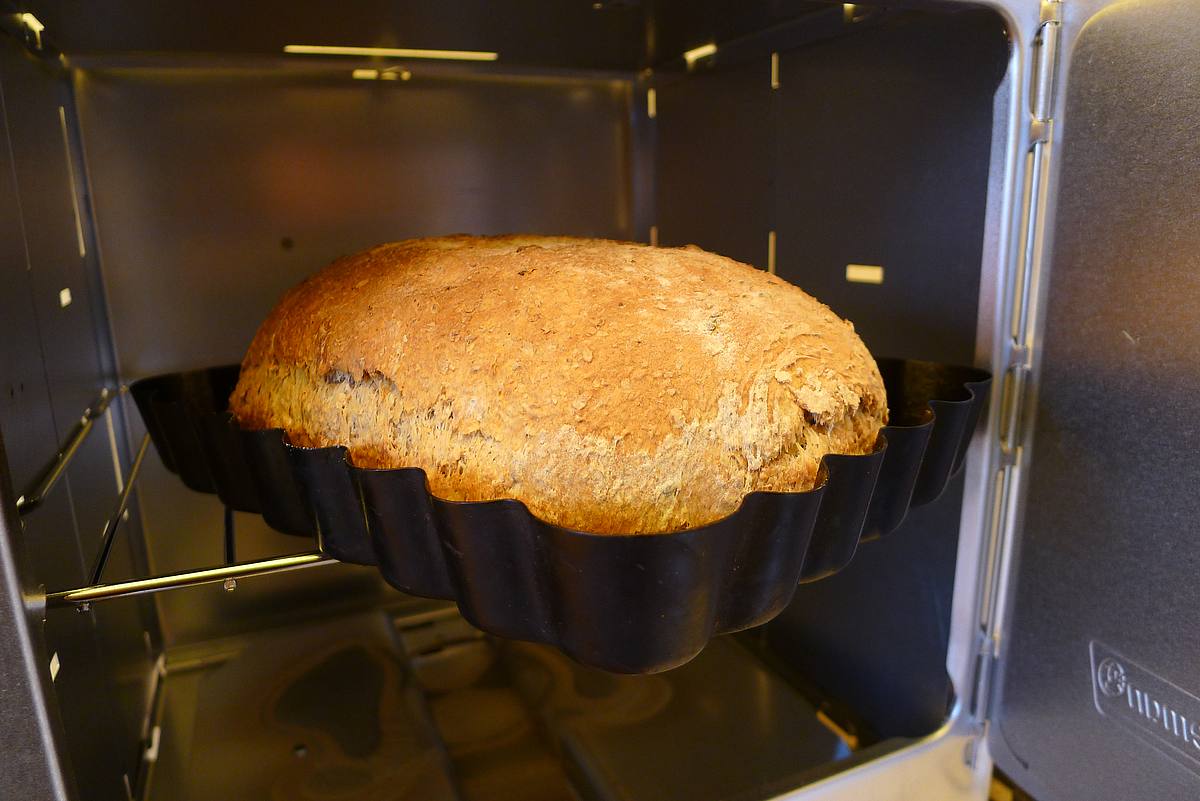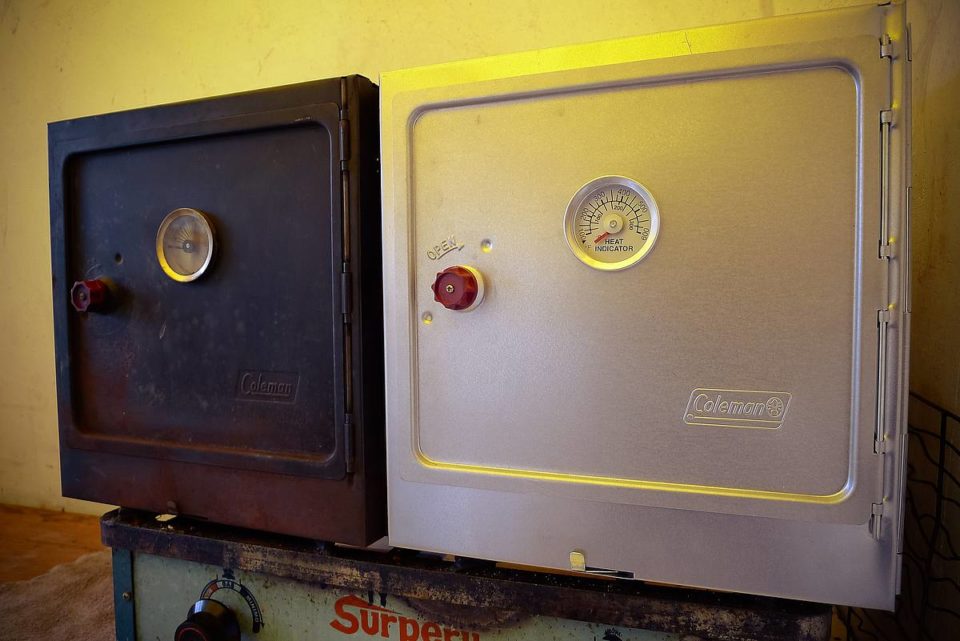Why would anyone living on the road for 10 years want to bake their own bread? If there’s one thing available in most countries, it’s bread, right?
Well, for bread you need stores and for stores you need a village or a town. Often we camp in the countryside and thus can’t buy fresh bread. Starting in Greece (2003) we learned to stock up on (multigrain-kind-of) biscuits, a reasonable alternative to bread, but when got to the subcontinent (Pakistan/India/Bangladesh), we found only super-sweet varieties.
In India we decided it was time to make our own bread, the local version that is: chapattis. In Pakistan we bought a dough roller and a flat, iron griddle to stir-fry food over a wood fire. One of our hosts in India gave us a cooking lesson and we subsequently baked fresh chapattis on a daily basis.
Making chapattis is as easy as it can get. Mix flour with water until you get the right substance, make thin patties of them and bake them on the griddle. They are delicious when fresh and still warm, but turn dry and hard as stone when stored for the next day.
We got fed up doing that every morning and the whole plan was abolished after a couple of weeks.
Meanwhile Coen had read about the Coleman Camp Oven. The discussion on buying one or not had been going on and off for the past eight years or so.
When it comes to buying stuff it generally goes like this:
Coen, the gadget guy, has the idea. “Why don’t we buy product X, Y, or Z?”
Karin-Marijke, who likes an uncluttered car and is totally not into gadgets, immediately resists, retorts with an autopilot response, “We don’t have space,” and, “We don’t need it.”
This discussion goes back and forth for a while, which gives us time to think about it. Sometimes we buy something that indeed turns out to be a waste of money and/or space and gets thrown out rather quickly, while at other times the purchase has been well worth the money and space it takes in the vehicle.
With the Coleman Camp Oven the discussion wasn’t a total “yes” from Coen or a rigorous “no” from KM. We both hesitated. Hence the discussion went on not for weeks or months, but years. Were we going to use it at all? How much space did it take for the few times we might use it? Our food schedule has generally consisted of eating local (white) bread for breakfast, taking lunch at a restaurant and skipping dinner or eating a noodle soup.

First, we were fed up with the South American white bread rolls, which are often tasty enough when fresh but are empty of nutrition, as well as the so-called whole-wheat bread from supermarkets that are so filled with god-knows-what and are so gummy you can roll the bread into a ball and play with it for weeks on end.
Second, during our annual visit to the Netherlands, Coen brought me to an outdoor cooking store. We needed to buy a thermos and a set of stainless-steel camping cookware to replace the more-than-40-year-old aluminum version my parents took on their first camping trips.
This shop also had the Coleman oven and I had to admit, yep, in its folded state it doesn’t take much space. Space was no longer the argument. So how about whether we were going to use it? Neither of us could answer that. As the oven cost a very reasonable 65 euros, we figured it wouldn’t hurt to buy it and try it out for a year. If it didn’t work, we could sell it on eBay next year.

Having said that, just an oven is not enough. You need baking molds. The oven came with one grate, which is an inefficient use of time and heat so we bought a second. And on that grate you can’t put cookies and I don’t want to use aluminum foil each time so we bought two silicone sheets. The extra grill and silicone sheets fit in the box.
The baking molds are used to keep the baked bread in so they won’t fall apart driving bumpy roads. So, all in all, it doesn’t take up too much space. The extra bowl we bought to knead the dough in (as our pans are too small for that) has turned out to be multipurpose as well.
The oven stayed hidden in the bowels of the Land Cruiser for a while because neither of us really had a clue what to do with it. Until we reached Cusco and met a couple named Johan and Christa. Christa had been a chef at her own restaurant in Switzerland for years and has always baked her bread, including while on the road. They have a Coleman oven as well. So with an expert on baking bread in the same oven as ours, Coen was a happy man.
Christa gave us a list of ingredients, we bought them, and we had a fun instruction morning.
The oven fits on our Coleman 424 stove. Johan and Christa like baking on a campfire or BBQ and put coals on top of the oven. One of the difficult issues of this oven is to get the heat evenly divided. You easily burn the bottom of whatever you’re cooking, while the top stays white. Whereas a bread is easy to turn around for the last couple of minutes, this is less evident with a cake or potato dish.
Later we read that putting a ceramic tile or pizza stone at the bottom of the oven may help spread the heat more evenly in the oven. That may be a next on our list of purchases.

Keeping the oven at the right temperature is a challenge for those who depend on cooking outdoors. When it’s cold but especially windy, it is hard to keep the temperature constant. It’s best to secure a spot void of changes in wind or temperature. At one place, high on the Chilean altiplano, we baked inside the Land Cruiser instead, converting the vehicle into a sauna in the process.
So there it is: our story of baking our bread. We enjoy doing it and love eating it. It doesn’t appear to be another whim, like the previous bread-baking attempts, but time will tell.
$36 • BUY
***
Recipe:
Whole-wheat flour is practically nonexistent in Peru (and most of South America). Locals use white flour. Later, we found (expensive) whole-wheat flour in Lima’s organic stores/markets.
Christa pointed out while you can’t find whole-wheat flour, salvado de trigo is a common product, which is the husk of the wheat. In this manner we can sort of create our own whole-wheat/multi-grain version by combining the two, plus a number of other ingredients.
For our first bread we used:
2 cups harina (white flour)
1/2 cup salvado de trigo
1/4 cup avena (oats)
1/8 cup cebada (barley)
7 grams yeast
7 grams salt
1 cup tepid water
a handful of crushed nuts and seeds
Coen followed Christa’s instructions:
Put the yeast inside a cup of tepid water and set it aside.
Mix all ingredients in a bowl except the salt in a bowl. Put it so that it looks like a volcano.
Spread the salt evenly along the outside border.
Pour the yeasty fluid inside the crater of the volcano and slowly stir with one finger trying to leave the salt untouched for as long as possible.
Knead for 20 minutes or so.
Cover the bowl with a towel and let it rise in a warm, wind-free spot until it doubles in size.
Take out the dough, knead it six times by folding it outside in. Put it in a baking form and let it rise again until it doubles in size once more.
Preheat the oven to 350 degrees Fahrenheit, then bake the bread for 25 minutes in the middle shelf.
Take the bread out of the baking form and put it upside down on the grate to color the top for 5 minutes.
The bread should sound hollow when you knock on it.
This article originally appeared on Land Cruising Adventure, a website chronicling the overlanding travels of Karin-Marijke Vis and Coen Wubbels. All photos courtesy of the authors.


4 comments
There is perceptibly a lot to realize about this. I suppose you made various nice points in features also.
hey there and thanks in your info – I’ve definitely picked up anything new from proper here. I did however experience some technical issues the use of this web site, as I experienced to reload the site a lot of occasions previous to I may just get it to load properly. I were wondering if your web host is OK? Now not that I am complaining, but slow loading instances instances will very frequently impact your placement in google and can injury your quality ranking if ads and ***********|advertising|advertising|advertising and *********** with Adwords. Anyway I am including this RSS to my e-mail and could look out for much extra of your respective exciting content. Ensure that you replace this once more very soon..
Precisely what I was looking for, thankyou for putting up.
Hello there, I found your web site via Google while searching for a related topic, your site came up, it looks good. I’ve bookmarked it in my google bookmarks.